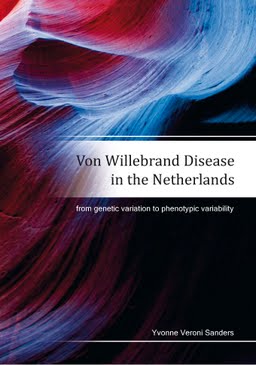2015-11-11
Von Willebrand Disease in the Netherlands
Publication
Publication
from genetic variation to phenotypic variability
De ziekte van von Willebrand in Nederland van genetische variatie tot fenotypische variabiliteit
Abstract
Von Willebrand Disease (VWD) is the most common inherited bleeding disorder resulting in mucocutaneous bleeding, like epistaxis, oral cavity bleeding and menorrhagia. VWD is caused by reduced or dysfunctional von Willebrand Factor (VWF). VWF levels are highly variable between VWD patients and within a patient over time. Also the clinical expression of VWD is very heterogeneous with a large variability in bleeding frequency and severity. The overall aim of this thesis was to investigate the genotypic and phenotypic determinants of VWF levels and bleeding in patients with VWD.
| Additional Metadata | |
|---|---|
| , | |
| F.W.G. Leebeek (Frank) | |
| Erasmus University Rotterdam | |
| The studies in this thesis were financially supported by Stichting Hemophilia and CSL Behring (unrestricted grant). Printing and layouting of this thesis was financially supported by Van den Tol stichting, Octapharma, CSL Behring, Sanquin Blood Supply, Baxalta, Bayer HealthCare, Pfizer bv, Novo Nordisk, and Erasmus MC. | |
| hdl.handle.net/1765/78963 | |
| Organisation | Erasmus MC: University Medical Center Rotterdam |
|
Sanders, Y. (2015, November 11). Von Willebrand Disease in the Netherlands. Retrieved from http://hdl.handle.net/1765/78963 |
|

